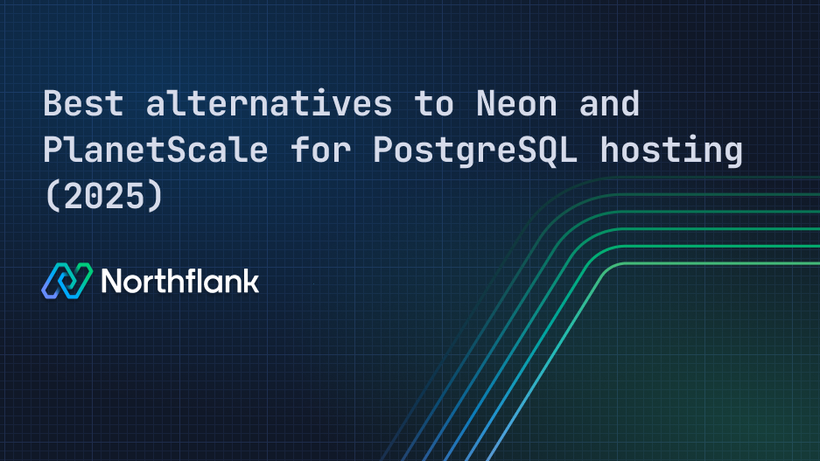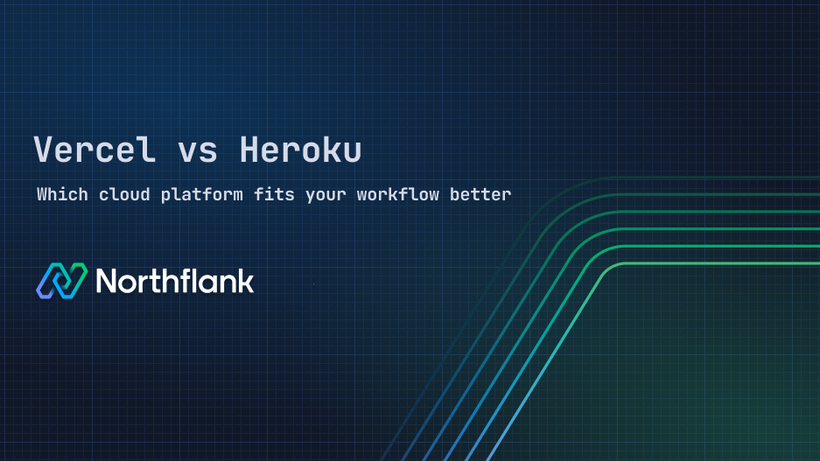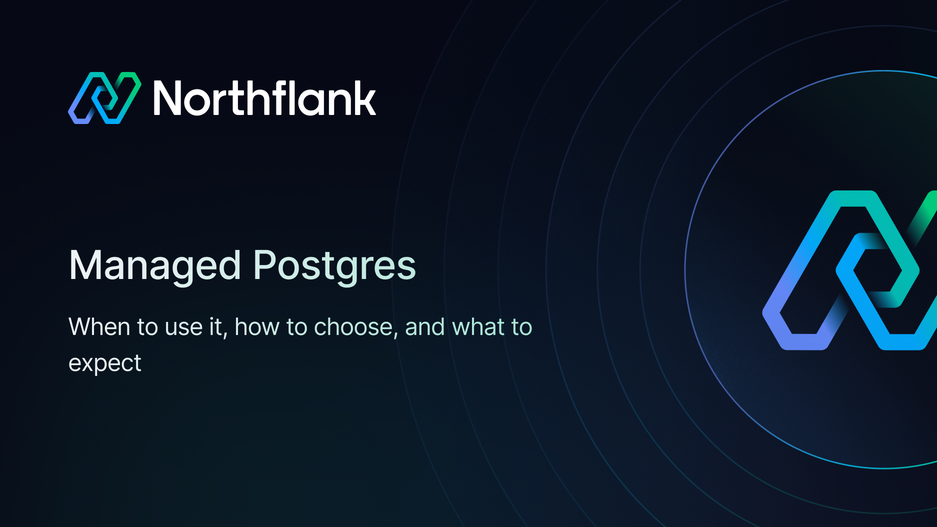

Managed Postgres: when to use it, how to choose, and what to expect
Managed Postgres is a fully-hosted PostgreSQL database service where providers handle infrastructure, backups, updates, and scaling. Teams should consider switching when database maintenance is consuming significant engineering time that could be spent on product development, or when they need high availability and disaster recovery without dedicated database administrators.
If you've spent another evening troubleshooting a backup failure or rushing to apply a security patch to your PostgreSQL database, you understand the time sink. Running production Postgres requires constant attention to backups, security, performance tuning, and scaling.
A managed Postgres database removes these operational burdens by offloading infrastructure management to specialized providers. This guide explains when it's right for your team, what to look for, and how to make the transition smoothly.
Managed Postgres is a cloud-hosted PostgreSQL service where your provider handles every infrastructure task: server provisioning, OS updates, PostgreSQL upgrades, automated backups, replication, and monitoring.
You get a production-ready database endpoint without configuring servers or implementing high availability yourself. Your provider manages the complexity while you focus on application logic and data models.
The difference from self-hosted comes down to who's responsible when things break at “2 AM”. With self-hosted, your team owns everything. With a managed Postgres database, your provider handles infrastructure while you manage database design and queries.
The decision to move to a managed Postgres database depends on your team size, growth stage, and the value of your engineering time.
Start with managed Postgres from day one. The time you save on database operations goes directly into building product features. Even cheap managed Postgres options cost less than a week of engineering time spent on infrastructure issues.
You've hit the tipping point when database maintenance becomes a bottleneck instead of a background task. Your engineers are context-switching between application development and database operations, which slows down feature velocity and creates single points of failure when only one person understands your database setup.
Watch for these warning signs:
- Backup management is taking up significant team time
- Scaling decisions require multi-day planning
- Performance issues pull engineers away from feature work
- You lack dedicated database administrators
You need managed Postgres when downtime costs exceed management fees. High availability, automated failover, and point-in-time recovery become essential, and building these yourself is expensive.
Setting up proper replication, monitoring, and failover automation can take weeks of engineering time. Maintaining these systems requires ongoing attention that pulls resources from product development. Most teams find that managed services cost less than the engineering time required to build and maintain equivalent infrastructure in-house.
Not all managed Postgres providers offer the same capabilities, so your choice depends on what matters most to your application. See the key factors to evaluate:
Look for SLA guarantees, automated failover, and read replica support. Connection pooling should be built-in or easy to add. Query performance insights help you spot slow queries before they become problems.
Watch for hidden costs beyond the base price:
- Backup storage beyond included limits
- Data transfer fees (egress charges)
- IOPS charges for disk operations
- Cross-region replication costs
Calculate the total cost for your workload, not just the base tier. Pricing models vary significantly between providers like DigitalOcean, Render, and others.
Compare these factors across providers:
| Cost factor | What to check | Why it's important |
|---|---|---|
| Compute | Per-core or bundled tiers | Affects scaling flexibility |
| Storage | Per-GB pricing + IOPS | Can exceed compute costs |
| Backups | Retention period included | Daily backups add up |
| Bandwidth | Ingress/egress charges | High for data-heavy apps |
You need both vertical scaling (more CPU/RAM) and horizontal scaling (read replicas). Check whether you can scale up without downtime during business hours.
Some providers require scheduled maintenance windows for upgrades, while others handle scaling transparently. The ability to add read replicas quickly becomes important as your traffic grows and read-heavy queries start impacting write performance.
Automated backups should run at least daily with configurable retention. Point-in-time recovery lets you restore to any point in time, which is critical for recovering from accidental deletions.
Test the restoration process before you need it in production.
Easy connection strings, CLI tools, and infrastructure-as-code support reduce friction. Look for:
- Environment variable injection for connection strings
- One-command database creation
- Simple migration tools
- Clear documentation with examples
SSL/TLS encryption should be the default. VPC isolation, IP whitelisting, and role-based access control protect your data. If you need compliance certifications (SOC 2, HIPAA, GDPR), verify your provider has them.
Even managed services require planning, and certain issues catch teams off guard during migration or early operation.
Most managed Postgres services cap concurrent connections based on instance size. If your application opens many short-lived connections, you'll hit limits fast. Plan for connection pooling from day one.
Database location impacts performance. Every millisecond of latency multiplies across queries. Choose a provider with data centers close to your application servers.
Start small and grow as needed. Most managed services make scaling up straightforward. Downgrading is harder, so avoid locking yourself into oversized commitments.
Managed doesn't mean "set and forget." Set up alerts for connection pool exhaustion, replication lag, and storage limits. Catching problems early prevents outages.
Northflank takes a developer-first approach to managed Postgres that solves common frustrations with traditional providers.
Your managed Postgres database lives on the same platform as your applications. Connection strings inject automatically into your environment. Scale both your application and database as needed through a unified platform. When you need a staging database, clone production in one click.
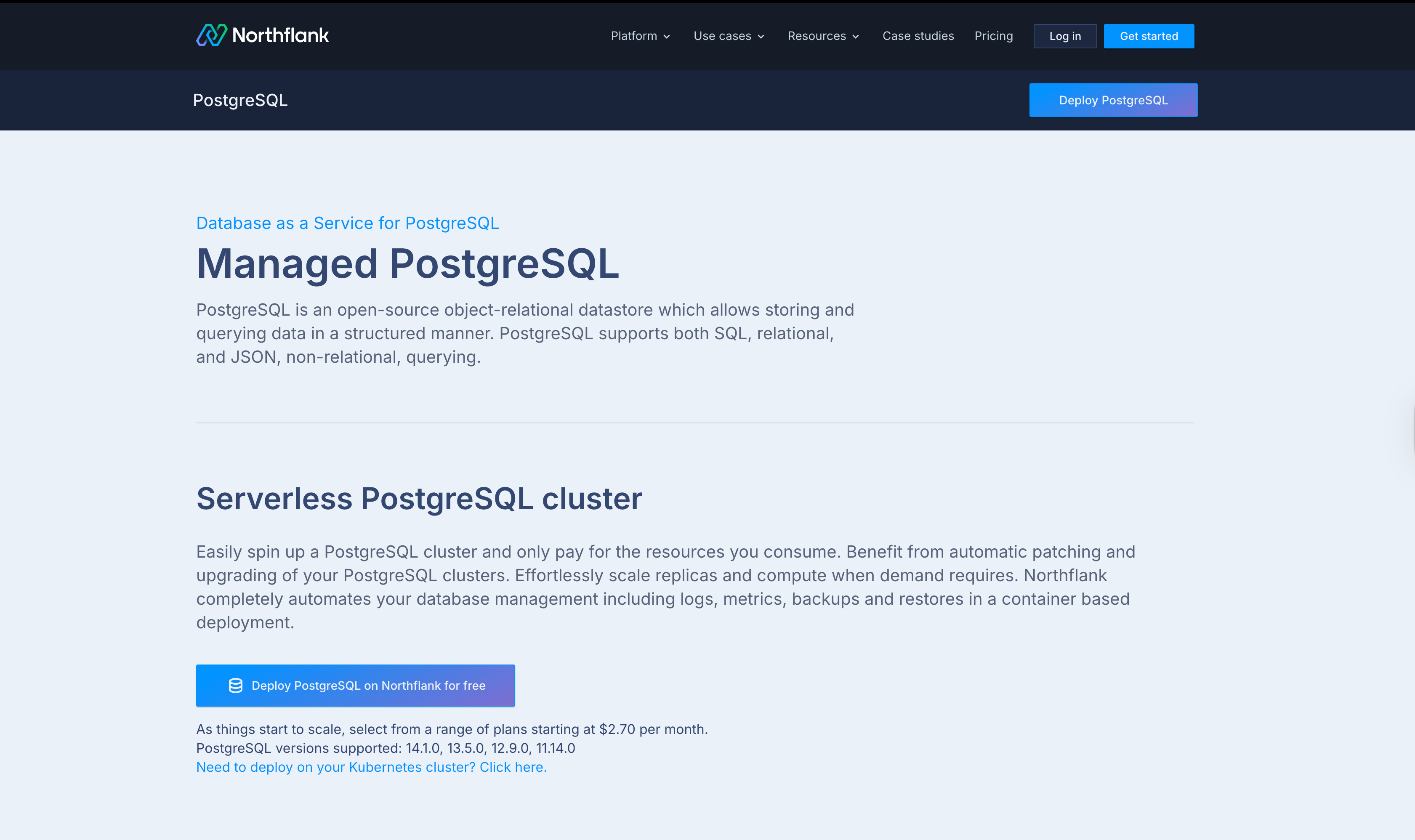
Key features that save time:
- Automated backups with point-in-time recovery - Roll back to any moment without manual snapshot management. Configure retention periods that match your compliance requirements, and restore databases to specific timestamps when issues occur.
- Automated failover and read replicas - Deploy multiple replicas with automatic promotion when the primary fails. Scale read-heavy workloads with dedicated read replicas that stay in sync with your primary database.
- Built-in connection pooling - Handle high-concurrency applications without hitting connection limits. Configure primary and read connection poolers separately based on whether your workload is read or write intensive.
- One-click scaling with zero downtime - Adjust CPU, memory, and storage through sliders in the dashboard. Deploy across multiple availability zones for redundancy without maintenance windows or manual configuration changes.
- Built-in monitoring and observability - Track query performance, connection usage, and resource metrics without configuring third-party tools. Get alerts before problems impact your users, with detailed logs for troubleshooting.
- Preview environments with database forking - Each feature branch gets its own isolated database. Fork production databases to create exact copies for testing migrations and schema changes safely.
- Private networking and TLS by default - Secure communication between your database and applications with Let's Encrypt TLS certificates. Use private networking to keep databases isolated or forward them locally with the Northflank CLI for development.
- Straightforward pricing with no surprises - A basic PostgreSQL database starts at just $3.91/month (0.1 shared vCPU, 256 MB memory, 4 GB storage, 1 replica) with backups, SSL certificates, and monitoring included. Scale up as you grow with transparent, usage-based pricing (no hidden charges for IOPS, bandwidth, or standard features). See full pricing details and calculate your costs with our pricing calculator.
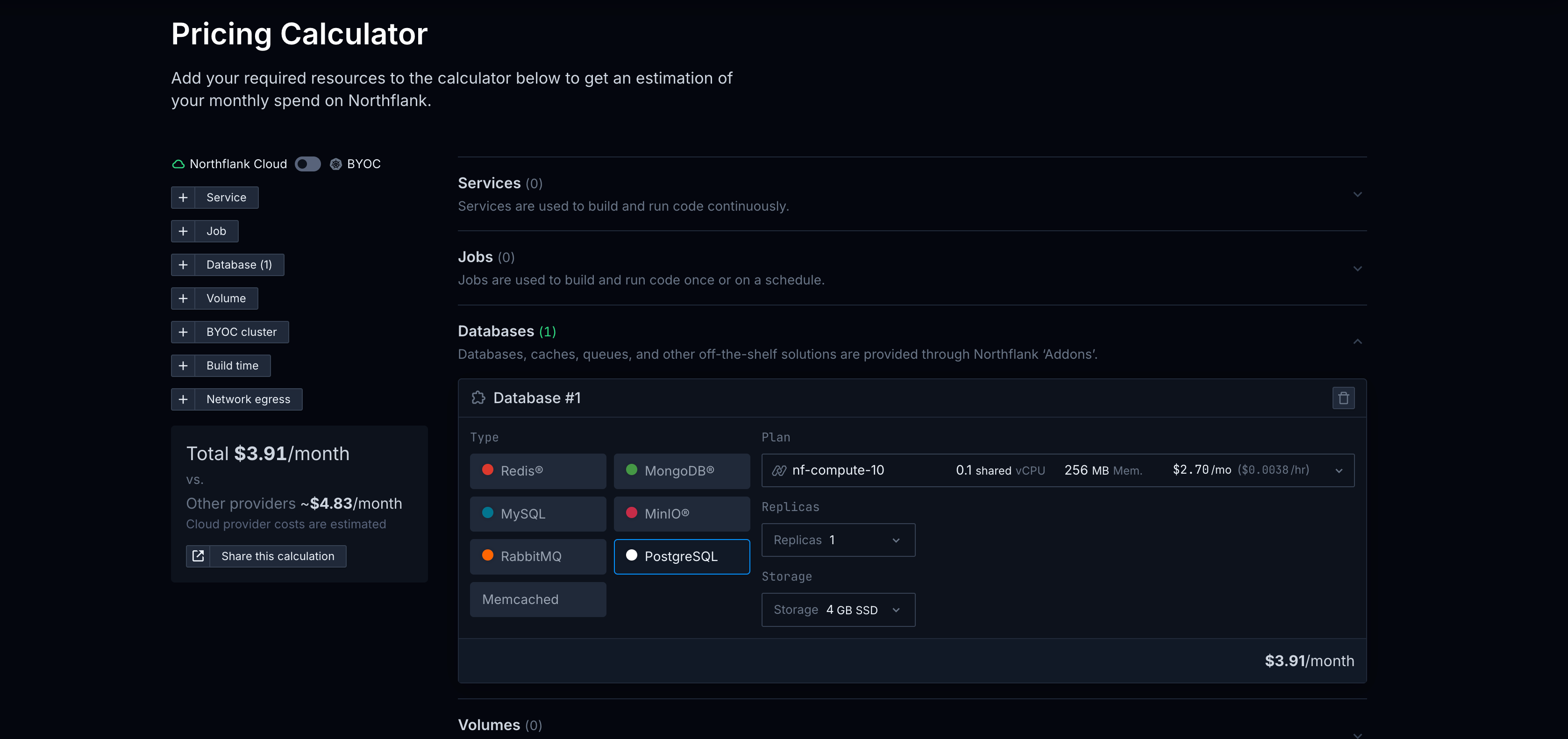
Deploy a Postgres database on Northflank in minutes using the web UI, CLI, or infrastructure-as-code. Start with our free developer sandbox to test it risk-free.
Need help planning your migration or have specific requirements? Book a demo to speak with an expert engineer about your team's needs.
Check out Northflank's managed PostgreSQL to see how it compares. For a deeper comparison across the market, read our guide on the best PostgreSQL hosting providers.
